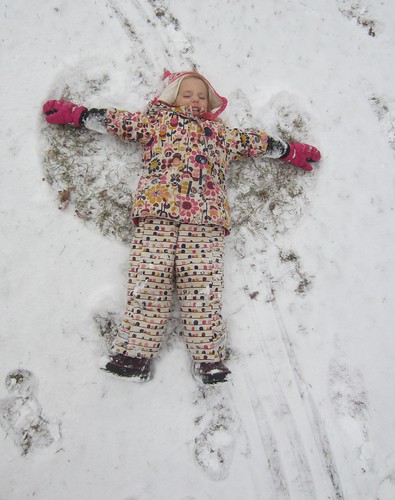 The first sticking snow fell, making a white playground perfect for pulling sleds and making snow angels. It didn’t last long, as the temperatures warmed enough to melt the snow, which then made ice puddles, then rain made water puddles over the ice. We enjoyed our week playing with the snow, then the ice, then the water.
The first sticking snow fell, making a white playground perfect for pulling sleds and making snow angels. It didn’t last long, as the temperatures warmed enough to melt the snow, which then made ice puddles, then rain made water puddles over the ice. We enjoyed our week playing with the snow, then the ice, then the water.








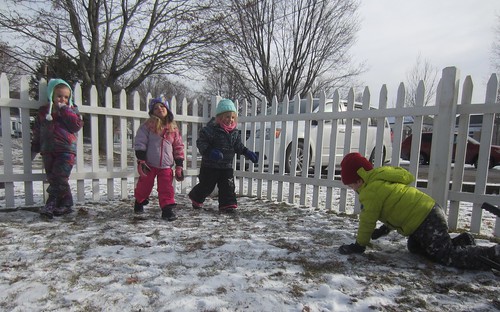

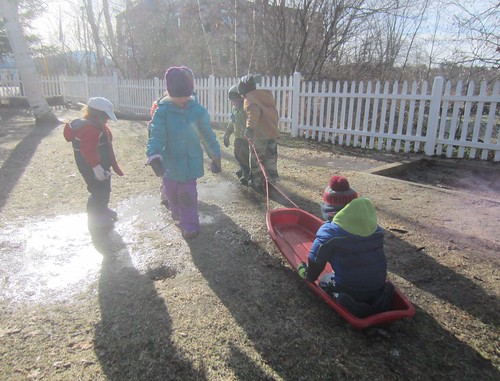





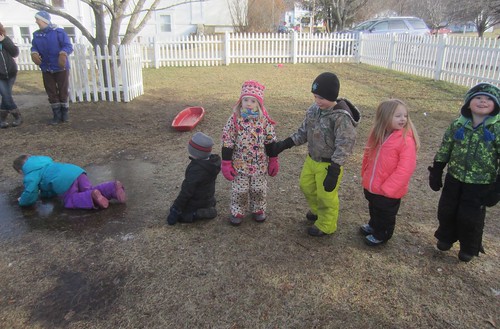
 For Monday art, students were introduced to the artist Wassily Kandinsky, and his famous circle paintings, Squares with Concentric Circles, and Several Circles. They used circular objects to print black circles on their papers, then set them up to dry. They then used colorful paints to paint their clay pots that they made last week. We introduced the Kandinsky Circles to the entire class on Tuesday, and the children made prints and painted them throughout the week.
For Monday art, students were introduced to the artist Wassily Kandinsky, and his famous circle paintings, Squares with Concentric Circles, and Several Circles. They used circular objects to print black circles on their papers, then set them up to dry. They then used colorful paints to paint their clay pots that they made last week. We introduced the Kandinsky Circles to the entire class on Tuesday, and the children made prints and painted them throughout the week.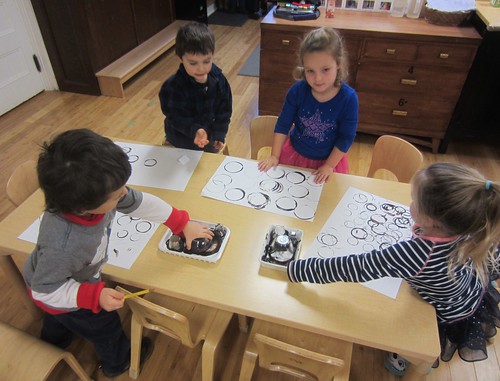



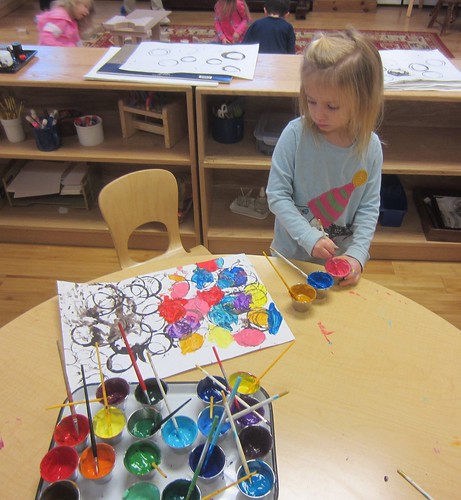
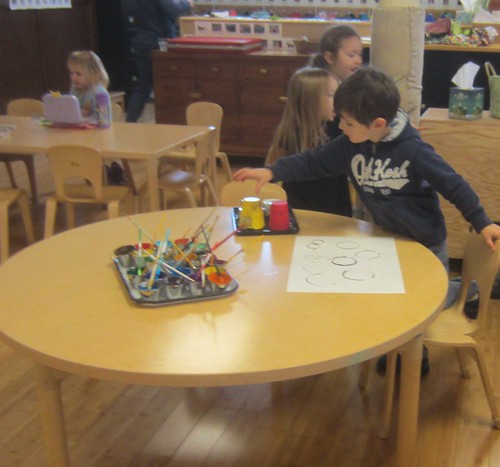

 The art table was also busy with children making Christmas ornament gifts for families. The children enjoyed tracing and cutting out circles, using the winter themed punches to punch out a white shape, and brushing on modge podge to coat their ornaments..
The art table was also busy with children making Christmas ornament gifts for families. The children enjoyed tracing and cutting out circles, using the winter themed punches to punch out a white shape, and brushing on modge podge to coat their ornaments..

 We were gifted with a beautiful new sign from Gerrie Scott, who was a Sunnybrook teacher for 27 years, and who continued to join us monthly to read, until this year, when health concerns prevented her visits. She stopped by briefly on Tuesday afternoon to have the sign she commissioned presented to us. Gerrie has been a presence for good in our community throughout her life, and her quote “Only Kindness Matters” is a valuable Sunnybrook philosophy. The children all signed a thank you card, which was delivered to Gerrie on Wednesday after school.
We were gifted with a beautiful new sign from Gerrie Scott, who was a Sunnybrook teacher for 27 years, and who continued to join us monthly to read, until this year, when health concerns prevented her visits. She stopped by briefly on Tuesday afternoon to have the sign she commissioned presented to us. Gerrie has been a presence for good in our community throughout her life, and her quote “Only Kindness Matters” is a valuable Sunnybrook philosophy. The children all signed a thank you card, which was delivered to Gerrie on Wednesday after school.

 With winter weather here, and winter fast approaching, we read many stories about the arrival of winter and the first snow. The majority of group time was dedicated to learning the songs that we will be performing for the winter celebration. Susan has selected several wonderful seasonal and holiday tunes for the children to learn, and they are particularly excited about getting to use bells to accompany their singing. Susan also read The Jacket I Wore In The Snow, a repeating story that we will be reciting and presenting.
With winter weather here, and winter fast approaching, we read many stories about the arrival of winter and the first snow. The majority of group time was dedicated to learning the songs that we will be performing for the winter celebration. Susan has selected several wonderful seasonal and holiday tunes for the children to learn, and they are particularly excited about getting to use bells to accompany their singing. Susan also read The Jacket I Wore In The Snow, a repeating story that we will be reciting and presenting.








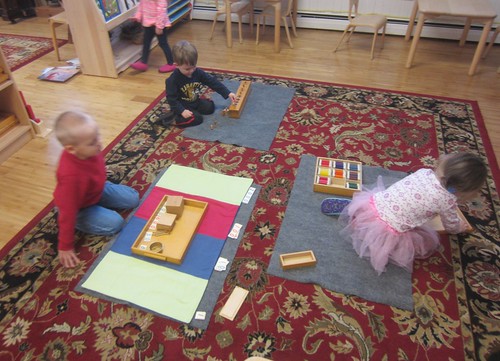


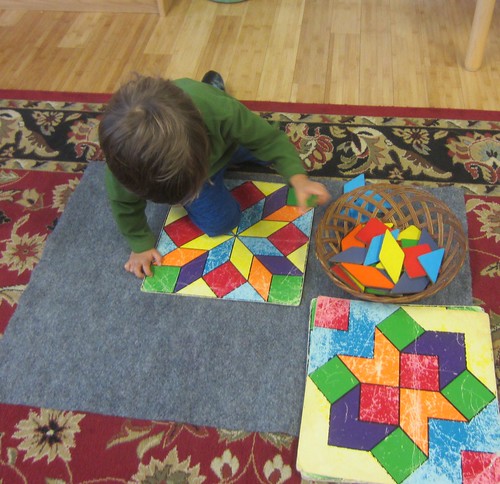






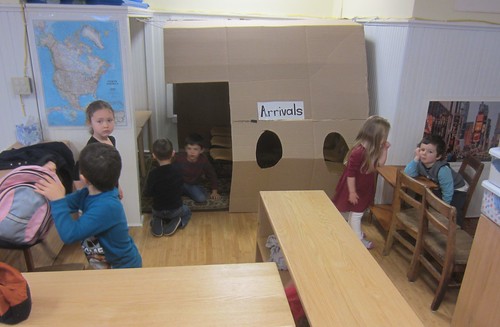



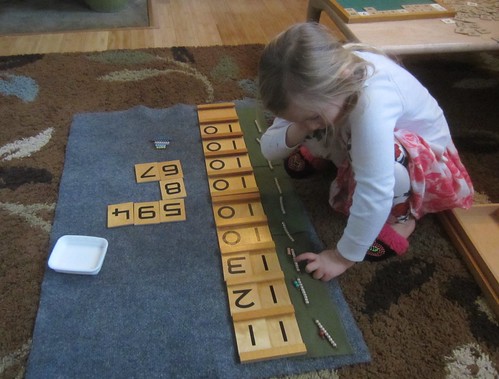










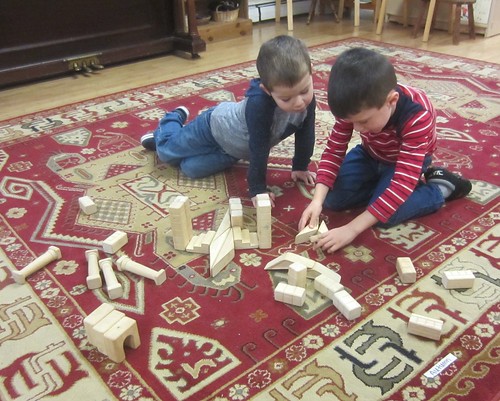 Zeanny came on Thursday for our final Spanish group of 2017. We sang some of our Spanish songs, then she introduced a cooking activity. She took out some pieces of giant green leaf and laid it out for the children to see, then asked them what type of leaf they thought it might be. She told us that it is from a fruit tree that grows in tropical climates. There were many guesses, including pineapple, mango, orange, lemon, peach, and pear. Someone eventually said banana, which she confirmed. The children noticed that it had a smell, some came closer to sniff it, and they disagreed about whether it was a good smell or a yucky smell. Zeanny then explained the process of making a tamale, which starts with washing hands, then washing the banana leaves, criss crossing two leaves, placing the masa and ingredients on the leaves, then wrapping and tying them.
Zeanny came on Thursday for our final Spanish group of 2017. We sang some of our Spanish songs, then she introduced a cooking activity. She took out some pieces of giant green leaf and laid it out for the children to see, then asked them what type of leaf they thought it might be. She told us that it is from a fruit tree that grows in tropical climates. There were many guesses, including pineapple, mango, orange, lemon, peach, and pear. Someone eventually said banana, which she confirmed. The children noticed that it had a smell, some came closer to sniff it, and they disagreed about whether it was a good smell or a yucky smell. Zeanny then explained the process of making a tamale, which starts with washing hands, then washing the banana leaves, criss crossing two leaves, placing the masa and ingredients on the leaves, then wrapping and tying them.
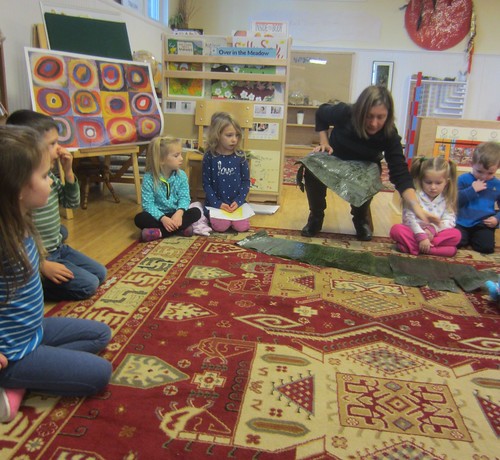

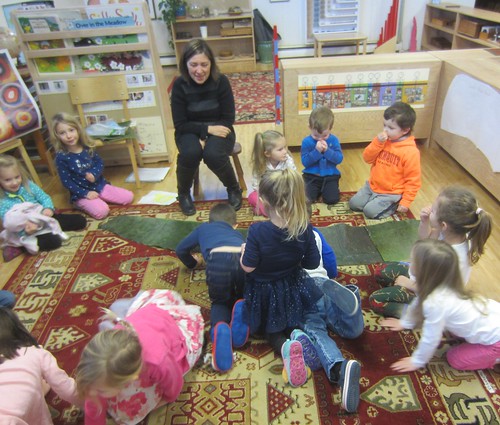

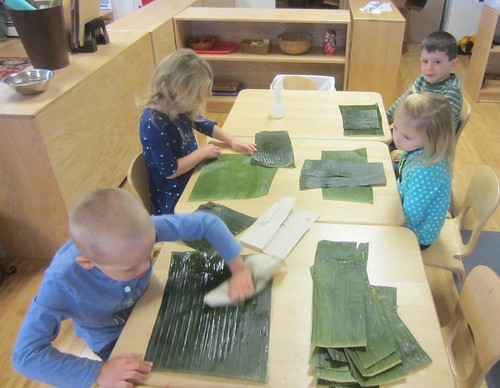




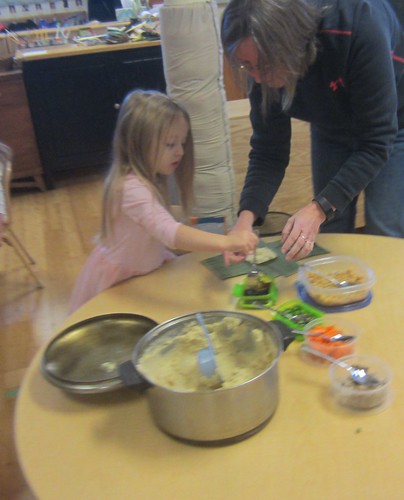



 Friday students checked out our egg that we placed in vinegar two weeks ago to see what happened. We observed that the shell had been removed by the vinegar, and the albumen and yolk were contained only by the soft membrane left under the shell. The children took turns gently touching it before we carefully placed it back in the jar. We then read about, discussed, and did some experiments about bird beaks. We read Unbeatable Beaks by Stephen Swinburne and Beaks! By Sneed B. Collard, and discussed the various types of beaks and what functions they serve. We looked at pictures of six different birds, and presented 6 different tools, then decided which tool was most similar to each bird beak. We paired the hummingbird with a straw, a heron with a skewer, a grosbeak with pliers, a robin with tweezers, a hawk with serated tongs, and a duck with a strainer. We then went to the six stations, each containing one of each of the six tools, and a type of “food.” The children then used the tools to determine which “beak” would be the best for eating each type of food. One station contained tiny “plants” floating in water. The second was a pot of soil with (rubber) worms. The third station was a shallow dish with (swedish) fish in the water. The fourth was a bowl of sunflower seeds. The fifth held a narrow neck soda bottle with water (nectar in a flower), and the final station held marshmallows (animal flesh) on a skewer. They really enjoyed experimenting, and were very thorough in their research.
Friday students checked out our egg that we placed in vinegar two weeks ago to see what happened. We observed that the shell had been removed by the vinegar, and the albumen and yolk were contained only by the soft membrane left under the shell. The children took turns gently touching it before we carefully placed it back in the jar. We then read about, discussed, and did some experiments about bird beaks. We read Unbeatable Beaks by Stephen Swinburne and Beaks! By Sneed B. Collard, and discussed the various types of beaks and what functions they serve. We looked at pictures of six different birds, and presented 6 different tools, then decided which tool was most similar to each bird beak. We paired the hummingbird with a straw, a heron with a skewer, a grosbeak with pliers, a robin with tweezers, a hawk with serated tongs, and a duck with a strainer. We then went to the six stations, each containing one of each of the six tools, and a type of “food.” The children then used the tools to determine which “beak” would be the best for eating each type of food. One station contained tiny “plants” floating in water. The second was a pot of soil with (rubber) worms. The third station was a shallow dish with (swedish) fish in the water. The fourth was a bowl of sunflower seeds. The fifth held a narrow neck soda bottle with water (nectar in a flower), and the final station held marshmallows (animal flesh) on a skewer. They really enjoyed experimenting, and were very thorough in their research.












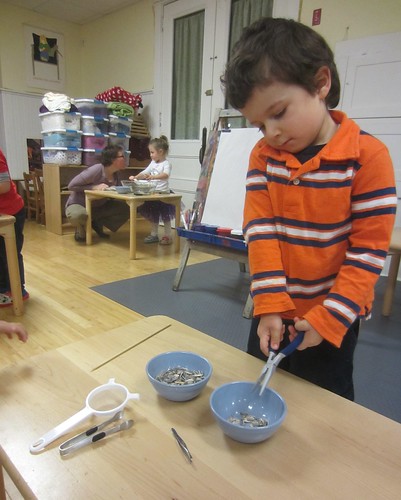
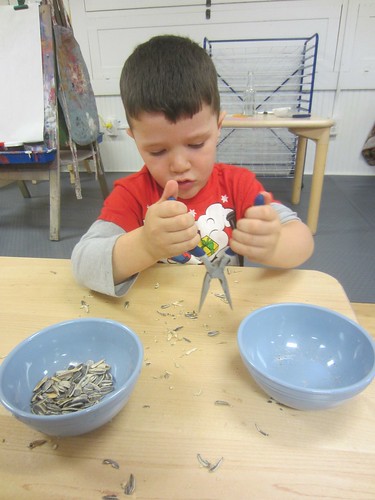




Angels
December 2, 2017
